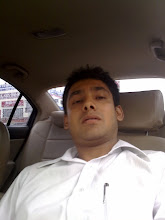Before 1927, movie audiences did not enjoy the rich quality of films which had authentic sound recordings to enhance the film. The Jazz Singer opened a new era in film making by bringing sound to the screen. Naturally, critics had their say in terms of expecting failure; however, the use of sound in film has revolutionized movie making and continues to this day. As a result, sound track has enhanced the emotional involvement of audiences. On the other hand, silence in films has accentuated dramatic effects. Specific sound also has a symbolic effect in films; likewise, some particular sounds are used repeatedly; cliché may be identified in soundtracks; and above all, sound tracks are used to strengthen the narrative in films.
Prior to 1927, the pit orchestra was used to mask background and production sounds in films. As a result, emotional involvement was not as in depth as in the present. For example, the soundtrack "Ride of the Valkyries" played in Apocalypse Now during the attack of the Vietnamese village enhances the emotional involvement of the audience. Additionally, the soundtrack "Susie Que," played during the GI USO Show where the soldiers tried to take over the events and jumped on the helicopter with the singing females, also enhances the emotional involvement of the audience.
The symbolic use of sound effects as agony was shown in The Pianist with the beating and screaming of the young boy crawling under the wall. The screams are symbolic of the agony experienced by the Jews behind the wall.
Repeated use of particular sounds was evident with the shooting of machine guns. The films, Apocalypse Now, and The Pianist, have the same sound of the machine gun fire. The guns had the same rate of fire and never ran out of bullets. Additionally, the sound of the street cars and the hoofs of horses pulling the carts in The Pianist were repetitious and sounded the same. Apocalypse Now also had the repeated sound of the helicopter blades in several of the scenes which were the same.
The use of sound tracks also strengthens the narratives instead of weakening them. For example, in The Pianist, the whistling sound of tanks firing at the building where he was hiding, thus leaving holes in the walls for his escape strengthens the narrative. In Apocalypse Now, the sound track "Ride of the Valkyries" strengthens the narrative of the attack on the Vietnamese village. Finally, the use of soundtracks creates different images in the minds of some audiences from the structure of the music while enhancing the narrative.
Beginning with the Jazz Singer movie in 1927, sound in films has produced a new quality of enjoyment for movie audiences. Sound has brought about a new era in film making which is one of the richest qualities of movie enjoyment for all audiences. It is continually growing in every aspect of film making, and has produced wonderful moments for audiences to reflect on in a positive way.
© Joseph S. Spence, Sr., 8/14/2009
© All Rights Reserved
Submitted by "Epulaeryu Master."

No comments:
Post a Comment